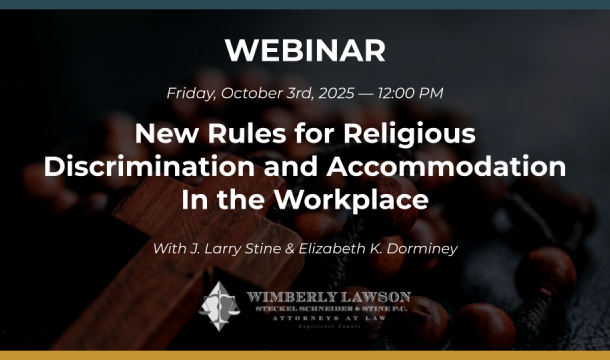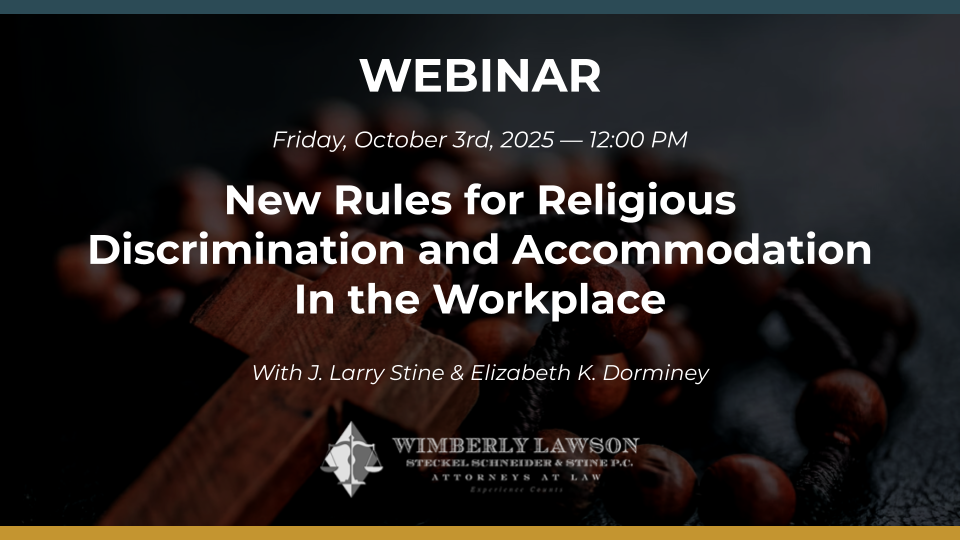CURRENT BASIC MINIMUM WAGE AND OVERTIME REQUIREMENTS
At its core, the Fair Labor Standards Act (FLSA) requires employers to pay non-exempt employees' wages equal to, or greater than, the federal minimum wage rate. The Act also requires employers to pay non-exempt employees overtime wages equal to one and one-half times the employee’s “regular rate” for all hours worked in excess of forty (40) per work-week. Currently, the federal minimum wage is $7.25 per hour.
One of the most fundamental concepts in wage-hour law is the distinction between “non-exempt” employees and “exempt” employees. To say that an employee is “exempt” typically means that he or she meets one of the exceptions to the minimum wage and/or overtime requirements of the Act. A fundamental premise under the Act is that all employees are covered by both the minimum wage and overtime requirements unless the employee specifically meets all of the requirements for a specific exemption.
Exempt Employees
The most common exemptions include the so-called "white collar" exemption. This provision exempts from both the overtime and minimum wage requirements employees who perform work in an "executive, administrative or professional capacity" and who are paid on a salary basis. Most employers try to qualify their supervisory personnel under this exemption, and for an employee to qualify for the executive exemption, the following requirements must be met: (1) compensation on a salary basis at a rate not less than $455 per week; (2) whose primary duty is management of the enterprise or a customarily recognized department or subdivision of the establishment; (3) who customarily and regularly directs the work of two or more employees; and (4) who has the authority to hire or fire other employees or whose recommendations as to the hiring, firing, advancement, promotion, or other status change are given particular weight.
While the current salary requirement is only $455 per week, or $23,660 per year, the Obama Administration proposed in a regulation raising this annual compensation level to $47,476. This higher salary level regulation has been enjoined by a court, and many expect the new administration to eventually raise the annual salary requirement to a middle level of around $33,000. As of the time of this publication, however, the minimum salary requirement of $23,660 remains in effect on the federal level.
Non-Exempt Employees
Regardless of how an employee is paid, his or her compensation must be converted to his or her “regular rate” of pay. Unless the employee is otherwise exempt, his “regular rate” of pay must equal or exceed the minimum wage, and he must be paid overtime wages equal to one and one-half times the “regular rate” for all hours in excess of forty (40) in a given “workweek.” A “workweek” is defined as any consecutive seven (7) day period. Employers may start their “workweeks” on any given day, e.g., a Thursday to Wednesday, but may not change “workweeks” once established if that change is done to avoid paying overtime. One may certainly have different work-weeks for different facilities or business units. An employer may change its work-week but only if it is clearly done with no intent to evade paying overtime. A person’s “regular rate” of pay is their weekly compensation expressed as an hourly rate regardless of how the employee is actually paid. Obviously, the “regular rate” for an employee who is solely paid on an hourly basis will be that hourly rate. If an employee is paid on some other basis, e.g., a piece rate, a salary, commission, or other form of payment, then his “regular rate” will be his total compensation for all non-overtime hours divided by his total hours worked during the workweek.
Once an employee’s “regular rate” is determined, he or she is entitled to overtime pay equal to one and one-half times the “regular rate” for all hours worked in excess of forty in the workweek. Employers may not average workweeks; each workweek stands alone, regardless of how often the employee is paid.
If the individual’s salary is intended to compensate them for all hours worked, then their “regular rate” is the salary divided by the actual hours worked during the workweek. Under this methodology, the employee would be owed overtime for any hours beyond forty (40) at a rate of one-half the “regular rate.” Under this method, the employee’s “regular rate” will fluctuate depending upon the actual number of hours worked in each workweek.
Hence, it is important to make it clear to non-exempt hourly employees just what precisely their salary will cover. Typically, employers mean for the salary to cover all base hours worked; that needs to be made clear to the employee upon hiring. It is strongly suggested that employers should document the fluctuating workweek method in order to avoid any disagreement or misunderstanding between the employer and employee. This documentation should also be helpful in the event of a wage-hour investigation by the U.S. Department of Labor.
On-Call Time
Employees must be compensated under the Fair Labor Standards Act (FLSA) for all work periods. The issue becomes more complex, though, for “on-call time.” Essentially, time spent waiting for work is compensable if it is spent “primarily for the benefit of the employer.” If the time spent is primarily for the benefit of the employee, then the time is not compensable. In essence, courts will examine how much control the employer has over the activities of the employee during the time period in question versus how much freedom the employee has to pursue his own activities.
Obviously, being on-call restricts, to some degree, the freedom the employee has to effectively use the time. Typically, the amount of time an employee has to respond to the call—and that alone—does not make on-call time compensable. A Wage and Hour Interpretative Bulletin states, “an employee who is not required to remain on the employer's premises but is merely required to leave word at his home or with company officials where he may be reached, is not working while on-call.”
The use of beepers and cellular telephones has given employees a greater ability to effectively use on-call time for their own use. Thus, an important factor in the analysis is the length of response time given to an employee. A five-minute response time would severely restrict an employee's freedom and would support a finding that the on-call time is compensable. However, there can be limited circumstances where such short time to respond is not a controlling factor.
In this age of technology where one can utilize their devices, e.g., cell phones, smart phones, to have a great deal of freedom of movement and broad activity, time spent being on-call is normally not compensable. The employer should give the employee a reasonable amount of time to report to work if necessary (30 to 60 minutes). On the other hand, requiring an employee to be on the job in 15 minutes from the time the employee is notified through his electronic device will, in all likelihood, be deemed compensable. Since the agreement between the employer and employee can be part of the analysis, it is helpful for the employer to have its policies in this regard in writing.
Related Content
Get Email Updates
Recent Content

Trump Nominates Appointments to NLRB and EEOC but Policy Changes Likely to Be Delayed

DOL Launches Self-Audit Programs Designed to Help Employers Improve Compliance

DOL Must Release EEO-1 Reports to the Public under Open Records Laws

Current Advice on Active-Shooter Situations

New Policy for Federal Workers and Religious Expressions

